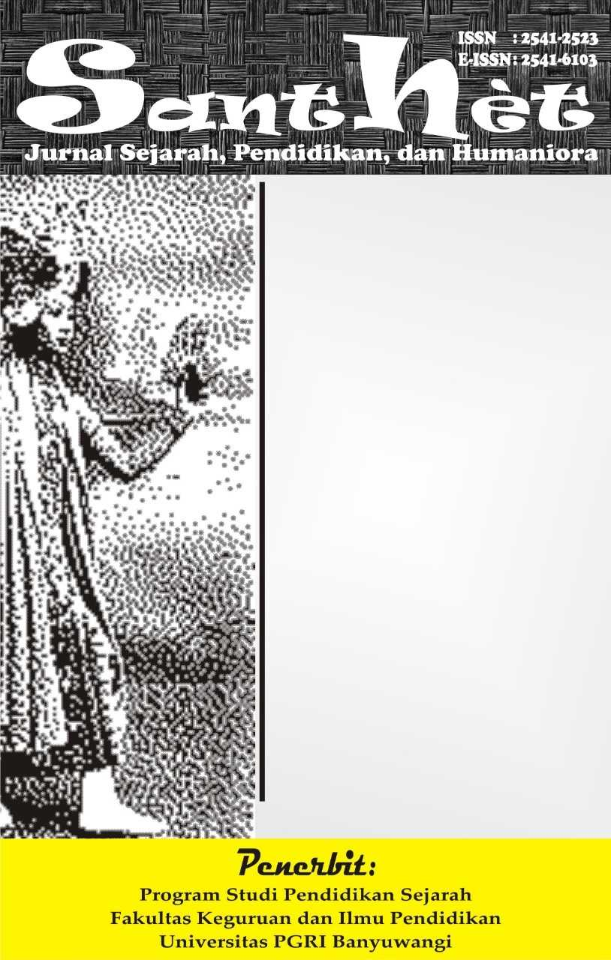Japanese Cave Site as a Historical Tourism Object in Aeramo Village, Aesesa District, Nagekeo Regency
DOI:
https://doi.org/10.36526/santhet.v7i2.3204Keywords:
Japanese Cave Site, Historical Tourism Object, Aeramo VillageAbstract
This study aims to find out the history of the Japanese cave site in Aeramo village, also to find out its current condition and efforts to maintenance and utilize the Japanese cave site as a historical tourist attraction. The research method used is a qualitative method with a descriptive approach. The research was carried out at the Japanese cave site in Aeramo village, Aesesa district, Nagekeo Regency. Data was collected using direct observation techniques, unstructured interviews and documentation. Based on study results, it is known that the Japanese cave site in Aeramo village, which is located on Oki Sato hill and Oki Rane hill, was created during the Japanese occupation, which arrived in Mbay in 1942. Japanese cave sites are the result of forced labor (romusha) carried out by Japanese soldiers toward local communities. The current condition of Oki Sato Japanese cave seems poorly maintained like most abandoned buildings. While the Oki Rane Japanese cave is in fairly good condition. Maintenance efforts that have been carried out include building a wall to support the mouth of the cave, building a fence around the cave location, and planting trees (reforestation) around the hill.
References
Hadi, Wisnu. Studi Eksploratif Tentang Sentra Jamu Tradisional di Daerah Istimewa Yogyarta Sebagai Daya Tarik Wisata Kesehatan. Khasanah Ilmu : Jurnal Pariwisata Dan Budaya. Vol. 13, No.1, Maret 2022 https://ejournal.bsi.ac.id/ejurnal/index.php/khasanah/article/view/12372
Ebed de Rosary/Mongabay Indonesia (https://www.mongabay.co.id/2019/11/17/melihat-bunker-persembunyian-tentara-jepang-di-mbay-kenapa-tidak-terawat/)
Suharyono, Edy. 2019. Kajian Penetapan Sebagai Situs Cagar Budaya Gua Jepang di Tretes Prigen Guna Pelestarian dan Penciptaan Daya Tarik Wisata Baru. Jurnal Kepariwisataan, Vol.13,No.3,P.35-48. https://ejournal.stipram.ac.id/index.php/kepariwisataan/article/view/54/49
Sukmaratri, Myrna. 2018. Kajian Objek Wisata Sejarah Berdasarkan Kelayakan Lanskap Sejarah di Kota Palembang. Jurnal Planologi, [S.L.], V. 15, N. 2, P. 164-179. https://jurnal.unissula.ac.id/index.php/psa/article/view/3071
Mulyadi, Yadi dkk. 2019. Kajian Pelestarian Bungker di Pattunuang Maros : Perspektif Peraturan Perundangan Cagar Budaya https://kebudayaan.kemdikbud.go.id/bpcbsulsel/wp-content/uploads/sites/32/2017/12/bunker-ok.pdf
Suryabrata, Sumadi. 2013. Metodologi Penelitian. Cetakan ke-24. Jakarta : PT. RajaGrafindo Persada.





























